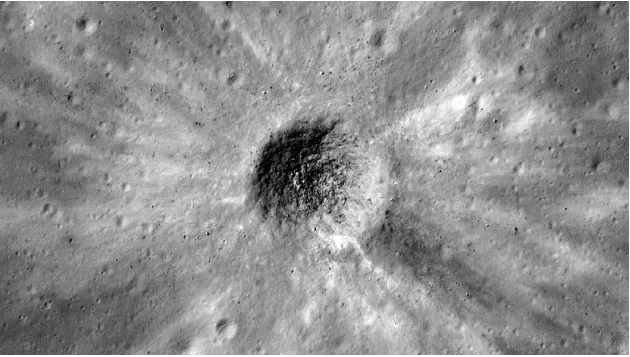On May 7, Beijing time, according to foreign media reports, when American astronauts landed on the moon in 1969, NASA must consider a space risk - micro space rock particles may penetrate spacesuits or other equipment. The earth has an atmosphere, and meteoroids usually disintegrate in the atmosphere, which is different from the moon, due to the thin atmosphere of the moon, after astronauts landed on the lunar surface, It is easy to be hit by rocks or particles flying around in the air to cause damage**

Fortunately, the astronauts who landed on the moon did not face much risk. The probability of being hit by objects with a diameter of mm was only one in a million per hour. It is reported that the smallest diameter of meteoroid particles is at least 1mm in order to wear through the spacesuit worn by astronauts.
NASA is preparing to send humans to the moon by 2025 and establish human bases in lunar orbit or on the lunar surface. Therefore, it is very important to understand the frequency and number of meteoroid collisions on the moon. So how many meteoroids collide with the moon every day? How many will there be each year?
The specific answer depends mainly on the measurement of meteoroid size. Understanding meteoroid flux (meteoroids include space dust to asteroids about 1 meter in diameter) can roughly calculate the average number of meteoroids hitting the lunar surface every day.
The number of impactors less than 1mm in diameter cannot be accurately quantified. It is estimated that 11-1100 tons of space dust enter the moon every day. For larger meteorites and meteoroids, the number is more clear.
About 100 meteoroids the size of a table tennis ball hit the moon every day, and about 33000 meteoroids every year. Although they are small, each rock the size of a table tennis ball can hit the lunar surface with the impact force of 3.2kg of explosives. At the same time, larger meteoroids will also hit the lunar surface, but the impact frequency is low.
In addition, larger meteoroids (for example, larger than 2.5 meters in diameter) hit the moon about every four years. The power of these meteoroids hitting the moon is equivalent to 1000 tons of TNT explosive. The moon is about 4.5 billion years old, so it's not surprising that its surface is covered with all kinds of craters.
At present, scientists use several different methods to study lunar impact. Scientists can use telescopes to observe meteoroids colliding with the moon on earth. According to NASA, meteoroids will hit the earth's surface at a speed of 10-72 km / s, and the flash generated by the collision can be directly observed from the earth.
At the same time, scientists can also use orbital probes to observe the moon, such as NASA's Lunar Reconnaissance Orbiter (LRO), to observe the craters produced by meteoroids colliding with the moon. Because meteoroids move very fast, even 5 kg meteoroids will collide on the lunar surface to produce 9-meter-diameter craters, and collide and sputter 75000 kg of lunar soil and rocks. The Lunar Reconnaissance Orbiter can clearly observe the formation process of craters of this grade from the lunar orbit.
Although the moon is hit many times every year, it does not necessarily mean that human beings cannot survive. The surface area of the moon is about 38 million square kilometers. If human beings choose an area of 1 square kilometer as the human base in the future, the probability of meteoroid collision with the size of table tennis ball is about once every 1000 years. Therefore, the moon is full of hope for future lunar explorers and space probes! (Ye Qingcheng)